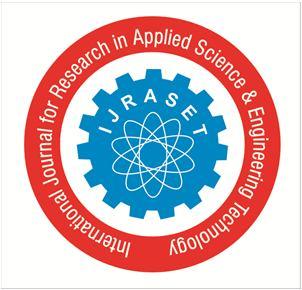
2 minute read
International Journal for Research in Applied Science & Engineering Technology (IJRASET)

ISSN: 2321-9653; IC Value: 45.98; SJ Impact Factor: 7.538
Advertisement
Volume 11 Issue IV Apr 2023- Available at www.ijraset.com
The following process in the Integrated Industrial hygiene Program.
1) Data Collection: Data collection is process of collection of the required data from different corresponding reliable sources. MSDS of sigma Aldrich, Chem watch MSDS and science lab can be referred for data collection of hazard characterization of different chemicals.
2) Hazard Characterization: Hazard characterization is evaluation of collected data according to the nature and properties of particular chemical and hazards associated with it. Data can be Categorize data in to following categories: Carcinogenicity data, Reproductive data, Toxicity data, Corrosive data, Flammability Data., Reactivity data
3) OEB Wise Characterization: A mechanism to quickly and accurately assign chemicals into “categories” or “bands” based on their health outcomes and potency considerations.
OEB 1 OEB 2 OEB 3 OEB 4 OEB 5
Least hazardous → Most Hazardous
4) Hazard Labelling: Hazard labeling is being done to provide guidance in the development, implementation and maintenance of an effective Hazard Labeling plan. Hazard labeling incudes following data: Material Name, Manufacturer’s Name and Address, CAS Number, Emergency Contact Number, Signal Word, Hazard Classification, Hazard Statement, Precautionary Statement, Pictogram
5) Qualitative Risk Assessment (QRA): Qualitative risk assessment is evaluation of potential personal exposure to workplace chemicals, physical, radiological, and/or biological agents based on personal experience and professional judgment. Qualitative assessment mainly focused on following parameters., Area, Unit operation/process, Duration of exposure, Quantity per batch or Activity, Physical form of material, Hazard classification
6) Quantitative Exposure Assessment (QNEA): QNEA is evaluation of actual personal workplace exposure to chemical, physical, radiological, and/or biological agents using accredited numerical and mathematical analysis. QNEA can be planned based on results of QRA. It is being performed to measure personal exposure. This includes: Media selection, low rate setting, Calibration, Personal exposure monitoring, Sending sampled media to the laboratory, Results
7) Velocity Measurement: Velocity measurement is the quantification of Air flow. Air flow can be measured in a variety of ways. Velometer is being used for measurement of Air flow. Velocity measurement Includes measurement of capture velocity, duct velocity and face velocity.
8) Personal Noise Dosimetry: Every worker who is exposed to or likely to be exposed to high noise levels shall be included in the noise monitoring exercise. The noise monitoring exercise refers to performing personal noise dosimeter measurement which involves in the measurement of individual workers noise exposure level using personal dosimeter. Noise Monitoring includes area selection for Personal Dosimetry, Calibration of Personal Dosimeters, personal Noise Monitoring and results.
9) Respiratory Fit Test: It is 10-15 minutes test to check whatever respirator is being used by person/worker/employee is fit for that particular person or not. Selection of test Agent, Hood preparation, Solutions fill up in to squeeze bottle, Respiratory Fit testing,
B. Risk Control Plan
1) Risk control is a step of the hazard management process that involves dealing with the risk in question.
2) Risk control is generally carried out in a hierarchical way, wherein the elimination of the risk is considered optimal (and at the top of the hierarchy), whereas personal protective equipment is considered to be the least effective option, and therefore sits at the bottom on the hierarchy.
3) Controlling risk is a key aspect of maintaining a safe workplace. it is including risk control plan of air, noise and ventilation.
C. Existing System
In this chapter introduce about the existing Industrial hygiene system not consist of integrated industrial Hygiene program for completed analysis of the hygiene study in Industries. It can be used to execute in industries.
D. Requirement Specifications
Responsibility of Occupational Physician. Discuss the results with Industrial Hygienist and suggest him required correction. Change in medical surveillance if necessary. Regular periodical biological exposure monitoring of all the employees of facility Increase productivity and employee efficiency by protecting and promoting employee’s health.




